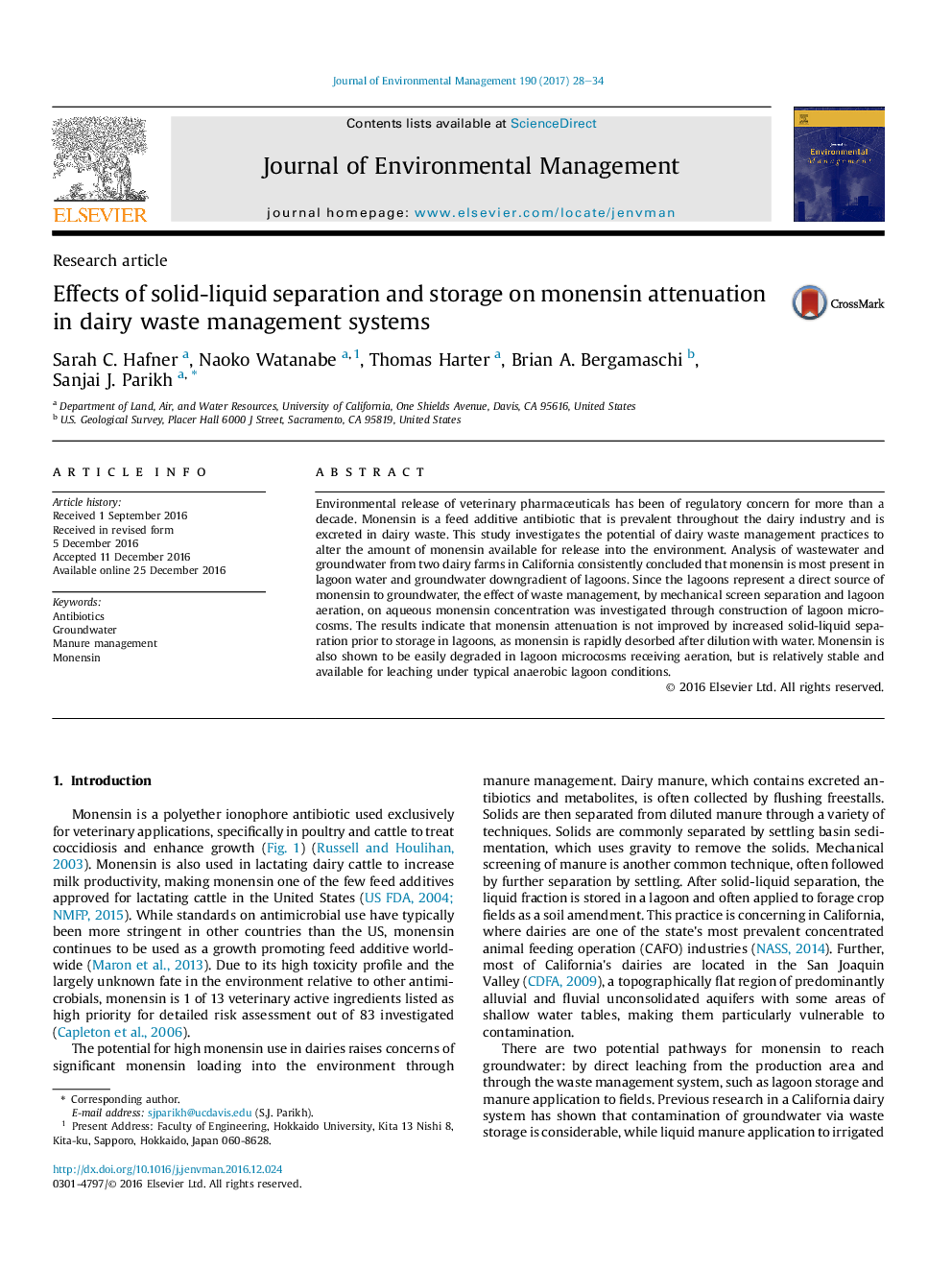| Article ID | Journal | Published Year | Pages | File Type |
|---|---|---|---|---|
| 5116881 | Journal of Environmental Management | 2017 | 7 Pages |
•Groundwater is highly impacted by monensin transport from dairy lagoons.•Solid-liquid manure separation is tested as a means of reducing monensin in lagoons.•Monensin rapidly desorbs from manure, revealing waste separation as ineffective.•Aeration of manure in microcosms causes first-order reduction of monensin.•Solid-liquid separation does not affect dissipation behavior of monensin in manure.
Environmental release of veterinary pharmaceuticals has been of regulatory concern for more than a decade. Monensin is a feed additive antibiotic that is prevalent throughout the dairy industry and is excreted in dairy waste. This study investigates the potential of dairy waste management practices to alter the amount of monensin available for release into the environment. Analysis of wastewater and groundwater from two dairy farms in California consistently concluded that monensin is most present in lagoon water and groundwater downgradient of lagoons. Since the lagoons represent a direct source of monensin to groundwater, the effect of waste management, by mechanical screen separation and lagoon aeration, on aqueous monensin concentration was investigated through construction of lagoon microcosms. The results indicate that monensin attenuation is not improved by increased solid-liquid separation prior to storage in lagoons, as monensin is rapidly desorbed after dilution with water. Monensin is also shown to be easily degraded in lagoon microcosms receiving aeration, but is relatively stable and available for leaching under typical anaerobic lagoon conditions.
Graphical abstractFigure optionsDownload full-size imageDownload high-quality image (344 K)Download as PowerPoint slide
